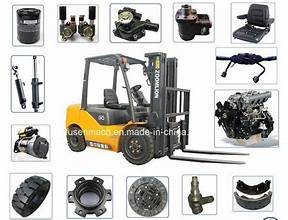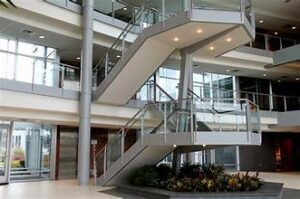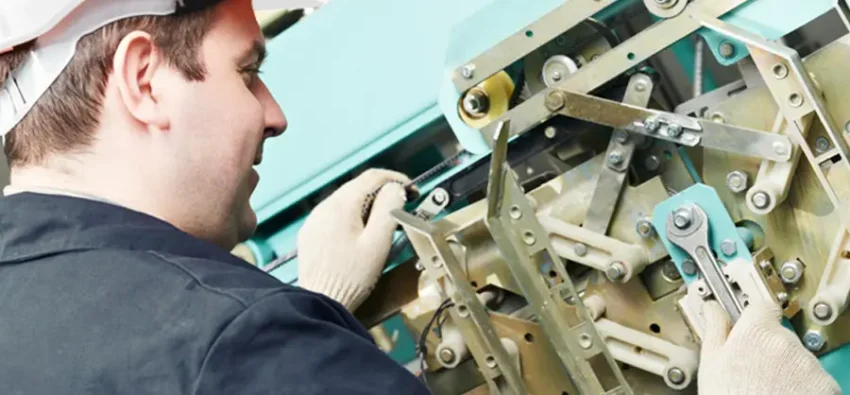Lift Parts are a foundation of present day framework, making it simpler to move individuals and merchandise inside structures. Yet, behind the smooth activity of a lift lies an organization of basic parts known as lift parts. These parts are fundamental for the usefulness, wellbeing, and proficiency of lifts. This blog entry investigates the universe of lift parts and lift gear, giving bits of knowledge into their significance, support, and key parts.
- Chapter by chapter list
- • What Are Lift Parts and Lift Hardware?
- Why Are Lift Parts Important?
- Key Lift Parts and Their Functions
- Elevator Cab
- Traction System
- Control Panel
- Safety Systems
- Guide Rails
- Counterweight
- Doors and Door Operators
- Power Unit (Water driven Lifts))
- Types of Elevator Equipment
- Traction Elevators
- Water powered Lifts
- Machine Room-Less (MRL) Lifts
- Freight Elevators
- How to Maintain Lift Parts for Optimal Performance?
- Regular Inspections
- Proper Lubrication
- Replace Worn-OutParts
- Monitor the Control System
- Hire Certified Technicians
- Common Problems with Lift Parts and Solutions
- Door Malfunctions
- Noisy Operation
- Sudden Stops
- FAQs
- What are the most critical lift parts?
- How long do elevator parts last?
- What is the cost of replacing lift parts?
- How might I guarantee my lift is protected??
- Are machine room-less elevators reliable?
- Conclusion
Contents
- 1 What Are Lift Parts and Elevator Equipment?
- 2 Why Are Lift Parts Important?
- 3 Key Lift Parts and Their Functions
- 3.1 1. Elevator Cab
- 3.2 Highlights: Incorporates flooring, lighting, mirrors, and ventilation for solace and feel.
- 3.3 2. Traction System
- 3.4 • Raising Ropes/Belt: Used to lift and lower the lift vehicle.
- 3.5 • Capability: Drives the lift all over the shaft.
- 3.6 3. Control Panel
- 3.7 4. Safety Systems
- 3.8 5. Guide Rails
- 3.9 6. Counterweight
- 3.10 7. Doors and Door Operators
- 3.11 8. Power Unit (Water driven Lifts))
- 4 Types of Elevator Equipment
- 4.1 1. Traction Elevators
- 4.2 2. Water powered Lifts
- 4.3 • Controlled by water powered liquid and a siphon framework.
- 4.4 • The most ideal for low-to mid-ascent structures.
- 4.5 • Benefit: Financially savvy establishment.
- 4.6 3. Machine Room-Less (MRL) Lifts
- 4.7 Compact design without a separate machine room.
- 4.8 4. Freight Elevators
- 5 How to Maintain Lift Parts for Optimal Performance?
- 6 Common Problems with Lift Parts and Solutions
- 7 FAQs
- 8 Conclusion
What Are Lift Parts and Elevator Equipment?
What Are Lift Parts and Lift Gear?
Lift parts allude to the fundamental parts that make up a lift framework. These incorporate everything from the links and engines to somewhere safe frameworks and control boards. Lift hardware, then again, incorporates the apparatus and devices that assist the lift with working without a hitch and proficiently..
Why Are Lift Parts Important?

Every elevator relies on a combination of lift parts and equipment to function. Here’s why they are critical:
- Safety:Properly functioning lift parts prevent accidents and ensure passenger safety.
- Productivity: Excellent parts guarantee smooth and effective lift activity.
- Life span: Sturdy and all around kept up with parts expand the existence of a lift.
- Consistence: Ordinary upkeep guarantees lifts meet wellbeing guidelines and construction regulations.
Key Lift Parts and Their Functions
To understand how elevators work, it’s crucial to know the key lift parts involved:
1. Elevator Cab
- Function:The cabin is the part where passengers or goods are carried.
Highlights: Incorporates flooring, lighting, mirrors, and ventilation for solace and feel.
2. Traction System
- Components:
- Traction Sheave:The wheel that moves the hoisting cables.
• Raising Ropes/Belt: Used to lift and lower the lift vehicle.
• Capability: Drives the lift all over the shaft.
3. Control Panel
- Function:Acts as the brain of the elevator.
- Components:Includes microprocessors and control systems to regulate speed, stopping points, and door operations.
4. Safety Systems
- Components:
- Overspeed Governor:Stops the elevator if it moves too quickly.
- Buffers:Absorb energy in case the elevator descends too far.
- Brakes:Keep the cab stationary when stopped.
- Function:Ensures passenger safety by preventing accidents.
5. Guide Rails
- Function:Ensure smooth and precise vertical movement of the elevator car.
- Location:Installed within the elevator shaft.
6. Counterweight
- Function:Balances the weight of the elevator car, reducing the load on the motor.
- Benefit:Improves energy efficiency.
7. Doors and Door Operators
- Function:Control the opening and closing of elevator doors.
- Components:Sensors and motorized operators for smooth, automatic door movement.
8. Power Unit (Water driven Lifts))
- Function:Pumps hydraulic fluid to move the car.
- Location:Typically found in the machine room.
Types of Elevator Equipment

Elevators can be classified based on their equipment and operational systems:
1. Traction Elevators
- Use ropes and counterweights.
- Ideal for high-rise buildings.
- Benefits: Energy efficiency and high speed.
2. Water powered Lifts
• Controlled by water powered liquid and a siphon framework.
• The most ideal for low-to mid-ascent structures.
• Benefit: Financially savvy establishment.
3. Machine Room-Less (MRL) Lifts
Compact design without a separate machine room.
- Ideal for space-saving applications.
4. Freight Elevators
- Built to transport heavy loads.
- Found in warehouses and industrial facilities.
How to Maintain Lift Parts for Optimal Performance?

1. Regular Inspections
- Schedule inspections every six months to identify wear and tear.
- Ensure all safety mechanisms are functional.
2. Proper Lubrication
- Keep moving parts like sheaves and bearings well-lubricated to reduce friction and wear.
3. Replace Worn-Out Parts
- Replace components such as ropes, belts, and buffers when signs of damage appear.
4. Monitor the Control System
- Update software and ensure electronic components are functioning properly.
5. Hire Certified Technicians
- Always rely on licensed professionals for maintenance and repairs.
Common Problems with Lift Parts and Solutions

1. Door Malfunctions
- Cause:Misaligned sensors or worn-out door operators.
- Solution:Adjust sensors and replace faulty operators.
2. Noisy Operation
- Cause:Worn-out guide rails or traction sheave.
- Solution:Lubricate or replace the affected components.
3. Sudden Stops
- Cause:Faulty brakes or overspeed governor.
- Solution:Replace or recalibrate the malfunctioning safety systems.
FAQs
1. What are the most critical lift parts?
Key parts include the traction system, safety devices, and control panel. These ensure smooth and safe elevator operation.
2. How long do elevator parts last?
Most elevator components last 20-25 years with proper maintenance. However, parts like cables may require replacement every 5-10 years.
3. What is the cost of replacing lift parts?
The cost varies depending on the part. For example, replacing a traction sheave may cost more than replacing door sensors. Consult with a professional for accurate estimates.
4. How can I ensure my elevator is safe?
Regular inspections, proper maintenance, and using high-quality parts are crucial for safety.
5. Are machine room-less elevators reliable?
Yes, MRL elevators are highly reliable and energy-efficient, making them a popular choice for modern buildings.
Conclusion
Elevators are an integral part of modern life, and their smooth functioning depends on high-quality lift parts and equipment. From the control panel to the traction system, every component plays a vital role in ensuring safety and efficiency. Regular maintenance and timely replacements are key to keeping your elevator running seamlessly.
Whether you’re a building manager or an elevator technician, understanding lift parts can help you make informed decisions about maintenance and upgrades. By investing in durable components and professional servicing, you not only enhance passenger safety but also extend the life of your elevator system.
